A fragrant, annual herb, basil is a popular crop to grow. With the proper care, it can provide a continuous supply of leaves throughout summer months.
From choosing between basil varieties to understanding how to store freshly-picked leaves, this guide will teach you all you need to know about growing and harvesting basil.
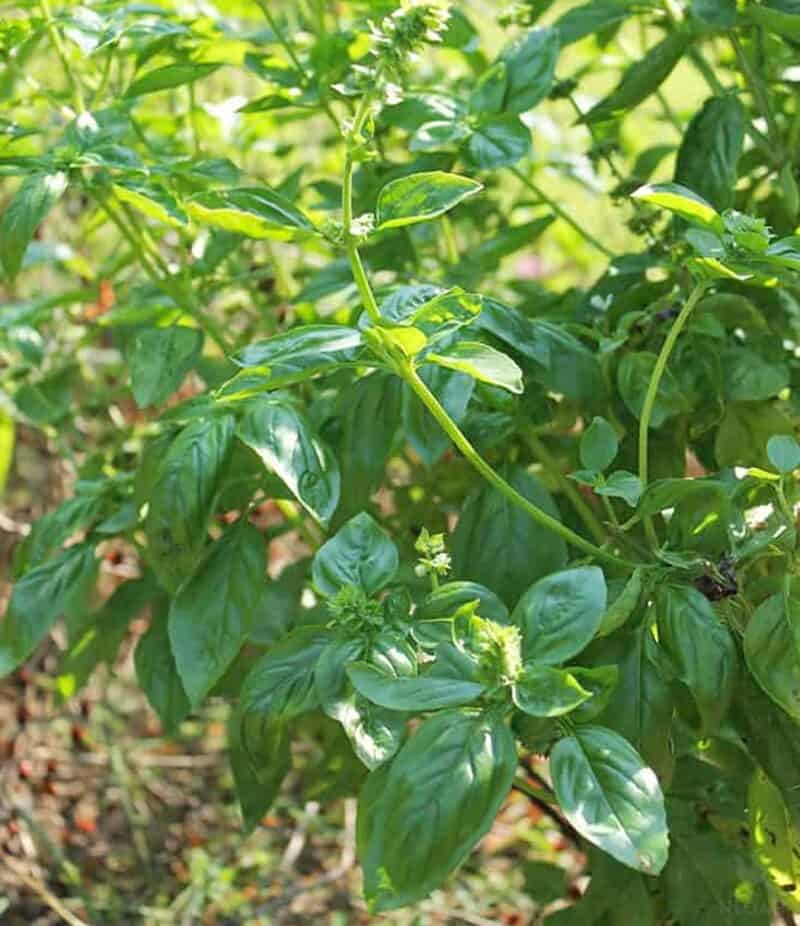
Many people do not realize that basil (Ocimum basilicum) is actually a member of the mint family, just like other popular herbs, such as lavender, rosemary and sage.
Its exact origins are unclear, with some believing it originated in India, while other evidence points to China.
Wherever it came from, Basil has been cultivated for over 5000 years all over the world, being used as everything from herbal medicine in ancient India to a symbol of mourning in Greece.
Why Grow Basil?
Basil is considered to be one of the healthiest herbs out there, because it contains an impressive list of nutrients. From vitamins A, C and K to iron, calcium, manganese and magnesium, basil is able to really boost a person’s health.
While basil is mostly used for culinary purposes, it also has a number of other uses:
- Often used in herbal holistic remedies
- Used in perfumery and incense, as basil has a strong, distinct fragrance
- Can relieve the pain caused by stings and bites, while drawing out venom
- Can be added to a facial steam to clear a headache
- When consumed regularly as a tea, basil can help to regulate blood sugar levels
- Can deter mosquitoes
- Reduce stress
- Attracts pollinators to the garden
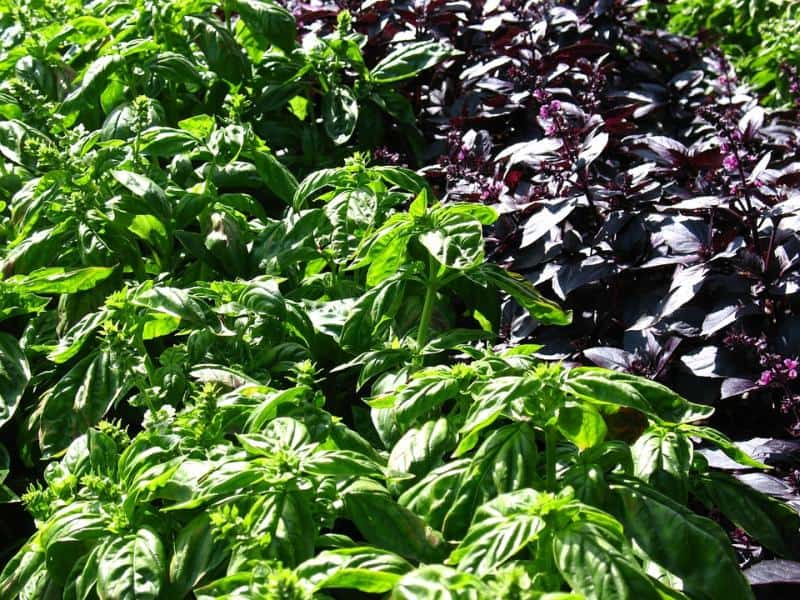
Basil Varieties
It’s estimated that there are around 150-200 varieties of basil, so you have plenty of options available to you when it comes to choosing a variety to grow.
A few of the most popular varieties to grow, as well as a few less common ones:
- Sweet Basil – the most common type, with a medium green color and a rounded, cup-shaped leaf
- Genovese Basil – the classic Italian basil with large, dark green leaves that are flatter than sweet basil
- Purple Basil – highly aromatic with an intense burgundy color, purple basil is not as sweet, and has a slight taste of cloves
- Lemon Basil and Lime Basil – sweet with a distinct citrus flavor, these two varieties complement each other beautifully
- Cinnamon Basil – has a spicy, cinnamon-like fragrance and flavor
- Spicy Bush Basil – tiny green leaves that grow on small, mounded plants, perfect for pots
- Holy Basil and Sweet Thai Basil – both of these are a must if you cook Asian food
- Purple Ruffles Basil and Green Ruffles Basil – curled, feathery leaves that give them an ornamental appearance, making them perfect for edible landscape
- Lettuce Basil – a compact plant with large, floppy leaves, ideal for lettuce wraps
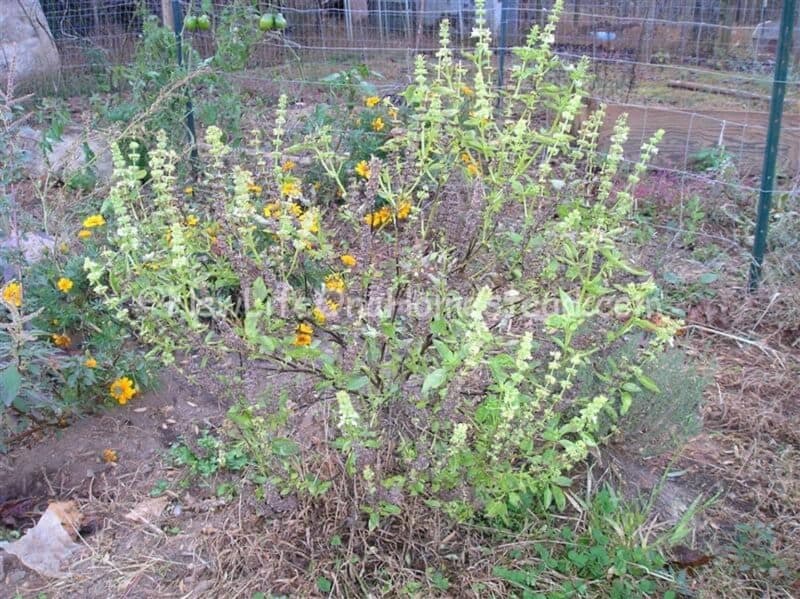
Growing Conditions for Basil to Thrive
To begin with, ensure you have the right soil, as basil grows best in moist, well-drained soil, with neutral pH.
Adding rich compost to your soil at the start of the growing season will help nourish your plants throughout summer, but make sure that you do not amend your soil too much. If your soil is too rich, your basil will not have as intense a flavor.
Basil requires a warm environment, and needs at least 6 hours of sunlight a day. While your plants still grow if they receive less, they will not be as prolific, and the flavor may be affected.
When it comes to the amount of space that basil plants need, this really depends on which variety you have. Try to leave between 12 and 16 inches of space between each plant, keeping in mind that they can grow between 12 and 24 inches high.
When planting any crop, always be aware of companion plants. These should be planted near your basil, to help it flourish, by protecting it from pests, and providing it with essential nutrients.
These are a few of the best companion plants for basil:
When and How to Sow Basil Seeds
Before you even begin to sow seeds, first decide how many basil plants you want. Each plant, so long as you care for it and prune it correctly, will provide you with about half a cup of basil per week. If you are growing basil for a specific purpose, be it culinary or otherwise, it’s worth figuring out in advance how much you actually need.
There are two options when it comes to sowing basil seeds: using starter trays, where the seedlings will later be transplanted, or sowing them directly into the ground.
If you are using seed starter trays, you can start sowing your basil seeds indoors as early as February, or around six weeks before the last expected frost of the spring.
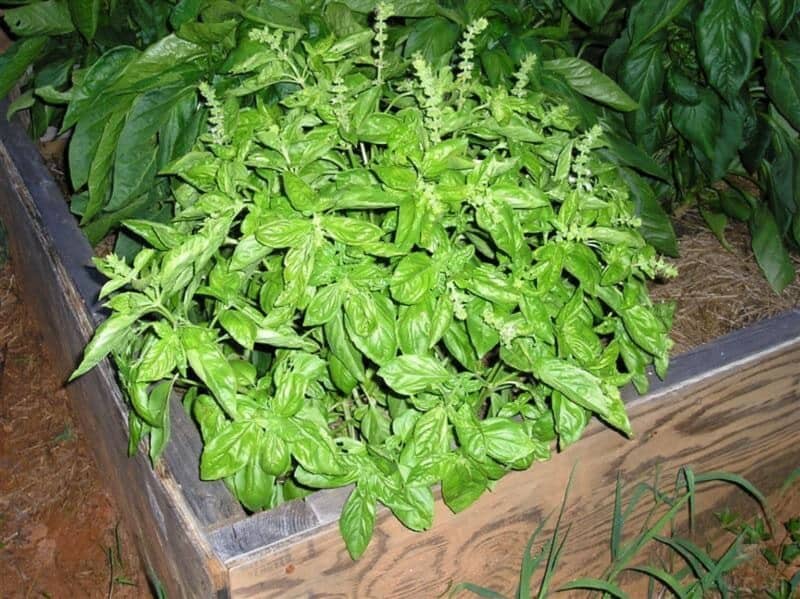
Fill your seed tray with seed compost, before firming this down and placing some seeds on top. Cover this with a thin layer of vermiculite, and then water them gently. To speed up germination, either place the seed tray into a propagator, or cover it with a clear, plastic bag.
Once your seeds have germinated, which should take about a week, remove them from the propagator, or take the bag off, and make sure that you keep the soil damp.
Once the seedlings have developed their first true leaves, they should be strong enough to be transplanted them to their final position, providing the temperature is warm enough.
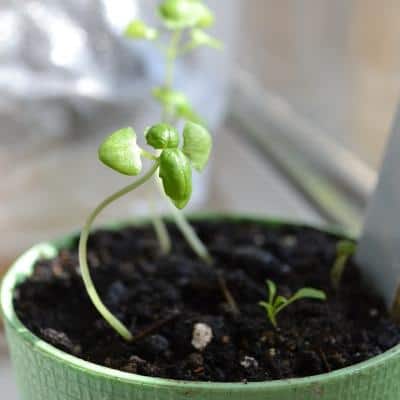
If you are planning on sowing basil seeds directly outside, you need to be patient, and wait until the soil has warmed up a bit. 70F (21C) is ideal for optimum growth, although you can get away with 50 F (10C).
While you may be tempted to try sowing a few seeds earlier, basil needs heat in order to germinate and grow, so it would be best to wait for the right conditions.
Sow your seeds about a ¼ of an inch deep (6mm), and about 12 inches (30cm) apart, before watering gently.
Keep an eye on the weather, because if temperatures start to suddenly tip, you may need to cover the soil with a cloche or fleece to help the germination process, which should take a couple of weeks.
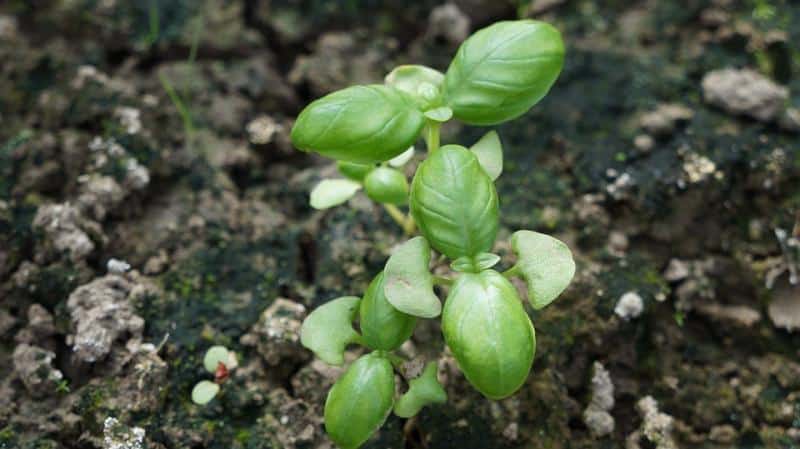
You can also sow basil directly into a container, without any intentions of transplanting it later on. The best time to sow your seeds depend on whether your container is kept indoors or outdoors. Alternatively, you could begin by keeping your container indoors while the seedlings grow, and then gradually harden them off before moving your container to its final place outside.
There are both pros and cons to using seed trays or a container instead of sowing directly into the ground. Of course, the advantages to this would be being able to initially raise them indoors, while having full control over the process. It also enables you to start seeds earlier than you would be able to outside, extending your growing season.
While this may be the case, sowing seeds in a seed tray means that you will eventually need to prick out your seedlings before transplanting them.
Not only does this put your seedlings at risk of suffering from transplant shock, but the entire process can be quite time-consuming, resulting in quite a bit of extra work.
Caring for Your Basil Plants
In terms of watering, you only need to water your basil plants when the soil feels dry to the touch. Only water the base of the plant, avoiding the leaves.
This will help to prevent botrytis, a disease we talk about below. If possible, water your basil in the morning rather than at night, because it doesn’t like wet roots overnight.
When your basil plants reach about six inches in height, it’s recommended that you add a light layer of mulch. This will help to improve the performance of your plants while feeding the soil and drowning out any weeds. Since basil does not grow well when it has competition, this is particularly important.
In terms of the best type of mulch, chopped leaves, straw or hay all work well. Place a layer that is about 2in (5cm) to 4in (10cm) thick around the base of the plants, and consider adding more later on in the season, once it settles.
Once your basil plants are properly established, it’s time to think about pruning them. This is really important, as regularly clipping encourages them to grow bushier and rounder.
Start pruning your basil plants when they are about 6 inches tall (15 cm), pinching off growing tips with your fingers or scissors. At each point of the plant that you cut, two new shoots will appear.
As the growing season continues, your basil plants will start producing flowers. This happens quickly if your plants have been stressed by heat or drought.
Nevertheless, flowers need to be pinched off as soon as they show up. This helps the plant focus all of its energy on producing more leaves. Don’t let the flowers go to waste, as they have a distinct basil flavor, and can be used in the same way you would the leaves.
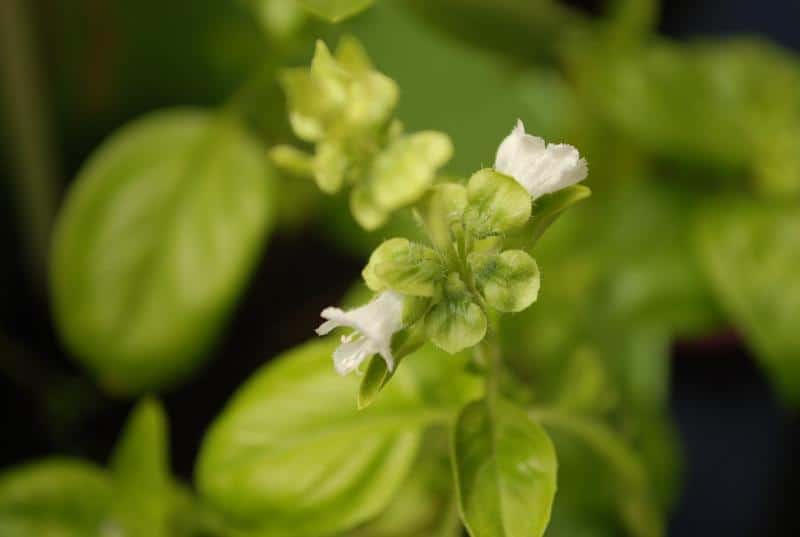
To help boost the growth of your basil plants, you can apply a liquid fertilizer to them once a month or so. This can be anything from seaweed to fish emulsion to even a bit of compost placed into your watering can. Be careful not to over-feed your basil plants, because while this may encourage more foliage, the intensity of flavor will drop.
If the basil leaves seem to be turning paler, this is a sign of a nutritional deficiency. It’s worth topping your plants up with fresh compost, as well as a liquid fertilizer throughout the growing season.
Don’t forget that basil does not do well in the cold.
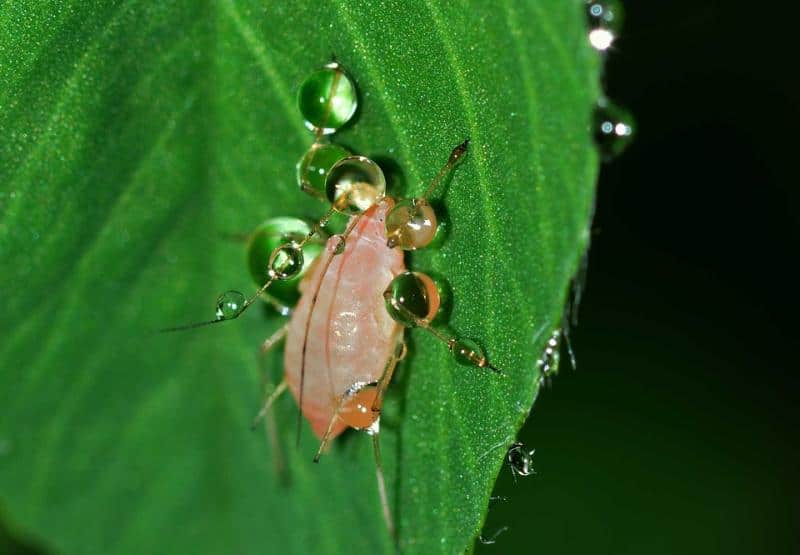
Common Pests and Diseases
Like every other crop, basil is susceptible to a number of different pests and diseases, and these will vary depending on the time of the year, as well the climate you’re in
Aphids are one of the most common pests that you will experience. These are small, soft-bodied insects that tend to usually be black or green in color, but can also be brown, red, yellow, or lavender. Barely visible to the eye, aphids feed on young growth, deforming it and stop future growth. Ladybugs are a beneficial insect that can really help to control aphids. Alternatively, there are many botanical sprays that you can buy, or even make at home.
This video will teach you how to control aphids naturally using neem oil:
Leafhoppers, which have light green, wedge-shaped, bodies, are another common pest. They usually attack the top of basil leaves, resulting in pale spots. These insects can also transmit viral diseases, making it important to eradicate them as soon as you notice them, with botanical sprays being your best bet.
Whitefly is a pest that is generally quite easy to see with the naked eye, as they have white bodies and tend to congregate underneath each leaf, where they then feed. These are actually quite a serious pest, and, again, botanical sprays are your most effective weapon against them.
Slugs and snails are other pests that you may encounter. They feed on young seedlings, leaving their tell-tale slime behind. There are many ways to control slugs and snails, from beer traps to copper tape to eggshell barriers, and, if you decide to go for one of these natural methods, it’s worth using more than one, just to make sure.
In terms of disease, fusarium is the one you need to be most aware of, especially if you are growing a sweet basil variety. This is a fungus that causes wilted leaves, stunted plants, and brown stripes on the stem, eventually leading to the death of the plant.
Botrytis is another disease to watch out for, a fuzzy mold that will appear on plant debris, usually brought about by poor air circulation. You should also keep an eye out for leaf spot, which manifests itself as black spots on the leaves.
If your plant has contracted one of these diseases, there is, unfortunately, not much you can do other than to remove the entire plant. Prevention is key here, meaning that it is important to maintain a clean growing environment, remove any plant debris as soon as it has fallen, and ensure that you have consistent air circulation.
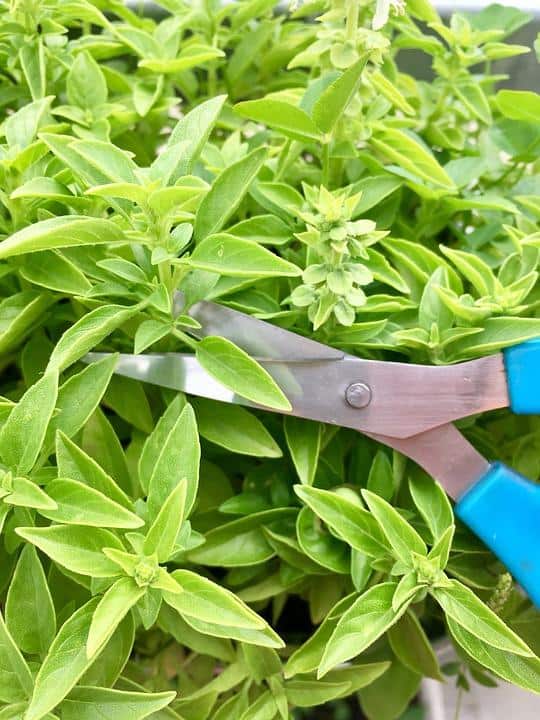
When and How to Harvest Basil
Basil needs to be harvested regularly throughout the growing season, in order to encourage the plant to continue growing.
To harvest basil, snip off a stem right above the point where two leaves meet. While basil needs to be harvested regularly, make sure that you only harvest up to two thirds of the plant at a time, so it can continue to grow. In order to maximize your yield, harvest smaller amounts from multiple plants, rather than stripping a single plant bare.
The entire plant will need to be harvested before the first fall frost, as the cold will quickly kill off the plants.
How to Store Basil
Once you’ve harvested your basil, make sure you don’t wash the leaves until you’re ready to use them. This prevents oxidation, which would turn the leaves black.
Basil leaves are delicate, and will only last in the fridge for up to 3 days.
One way to ensure a regular supply of basil in your kitchen, other than having the actual plants in there, is to place your picked stems in a jar of water, just as you would with ornamental flowers. Replace the water every day, and, depending on the temperature inside your kitchen, your basil could last there for up to 2 weeks.
Alternatively, you can freeze basil, by chopping the leaves up and then placing them in an ice-cube tray, before covering with water or oil. The shelf life in this case is 5 months.
This tutorial will take you through the details when it comes to freezing basil.
Another way to store a large harvest is to simply dry the leaves. Basil has quite a high water content, meaning that the drying process needs to be carried out quite quickly in order to prevent molding.
When it comes to drying, there are two ways you can go about it.
The first is air-drying:
- Cut basil stems so that they are around six inches long and then tie them together in bunches
- Punch some holes into a paper bag
- Place the paper bag around each bunch
- Hang the basil in a dark but warm room, with low humidity
- As the basil dries, the bags will catch any loose leaves that fall off the stem
- You know your basil is dry when the leaves crumble to a powder in your hands
Alternatively, you can use a dehydrator to dry your basil. Simply lay the leaves out, in a single layer, on the racks, and leave them to dry until they are crisp.
Another way to preserve your basil harvest is to use the leaves to make basil-infused olive oils, or basil butter. The butter can then be stored in the fridge or freezer, while the oil will last on your kitchen counter for around six months.
This video will talk you through how to make a basil butter:
Propagating Basil
It is always a good idea to let your most prolific basil plants produce flowers. Not only will this feed bees and other pollinators, but it also means that you will be able to save the seeds from your very best plants.
To save the seeds from a basil plant, you will need to cut off the dried, brown flower heads, before leaving them in a warm and dry spot to continue to dry for a few more days. Then crush the heads over a colander, as you need something to catch the tiny black seeds. Pick out any debris before storing them. They should be good for up to five years.
In addition to sowing seeds, basil can also be propagated from cuttings. This is actually pretty easy:
- Take a four inch cutting of basil, from right below a leaf node. Make sure you are taking the cutting from a plant that has not yet flowered
- Remove all of the leaves from the bottom half of the plant
- Place the cutting in a glass of water on a sunny windowsill, changing the water every few days
- You will soon see roots begin to form at the base of your stem, after which you need to leave the cutting to continue growing its roots, which should take about 2-4 weeks
- Once the roots are at least 2 in (5 cm) in length, plant your cutting in a pot, placing the pot somewhere warm and sunny
Growing Basil Microgreens
While basil is most commonly grown for its leaves, this is an herb that also makes a nutritious microgreen. As mentioned above, basil has so many beneficial health properties, and these are all increased when the plant is consumed as a microgreen.
While basil seeds take longer to germinate than other seeds often used for microgreens, micro basil is intensely aromatic, making it well worth the wait.
This video will show you exactly what you need to do to grow your very own basil microgreens:
Ways to Use Basil in the Kitchen
There are many ways in which you can use basil in the kitchen. An old Italian saying goes like this:
“Where salt is good, so is basil.”
To begin with, basil makes an incredible addition or garnish to several dishes, including:
- Pizzas
- Pastas
- Salads
- Sandwiches
- Soups
- Stews
- Eggs
- Meats
- Dressings and vinegars
- Marinades
- Sauces
When cooking with basil, remember to only add it in right at the end of the cooking process, as this will not only keeps most of its flavor, but also its nutrients.
Since basil is part of the mint family, it can also be used to make a delicious tea. This should be consumed after meals, as it works as a digestive aid.
Of course, pesto is not to be forgotten about. Don’t be afraid to experiment with it, mixing in other greens with basil, from arugula to chives. Pesto can then be sealed and refrigerated for up to three months, or frozen for even longer.
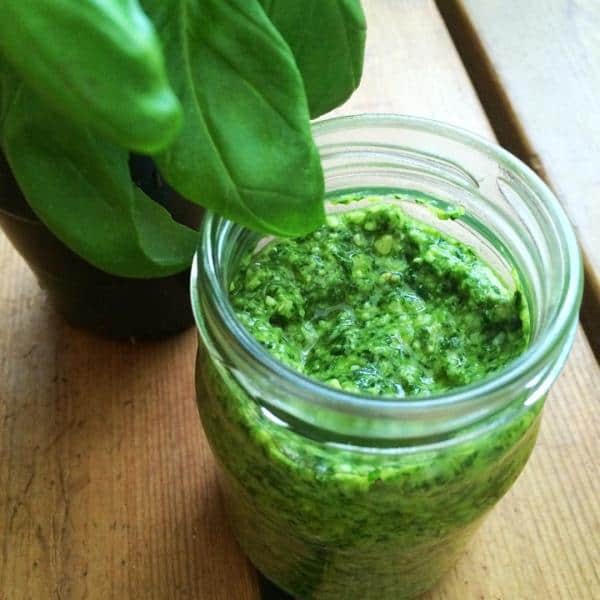
photo: basil pesto
Basil is an herb synonymous with the summer months, a must-have on every homestead.
Do you have any favorite basil varieties or recipes? Let us know in the comments section below!
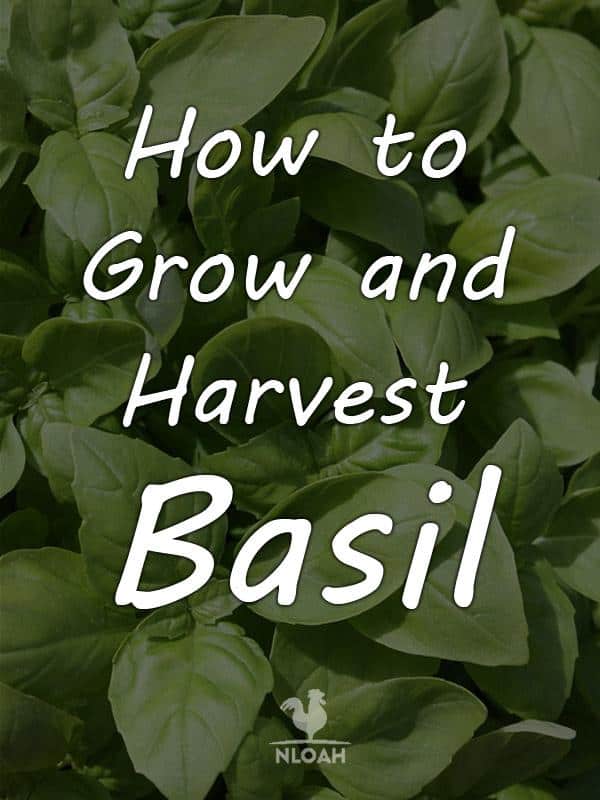

Alina was a born and bred city girl, until she moved to the Scottish countryside in 2013 to live the self-sufficient life. Thrown in at the deep end, she spent all her time learning as much about homesteading as she could, putting theory into practice each and every day. T
oday, Alina grows large amounts of food in her garden, greenhouse and polytunnel, and also has a number of different animals that call her little farm “home”.
